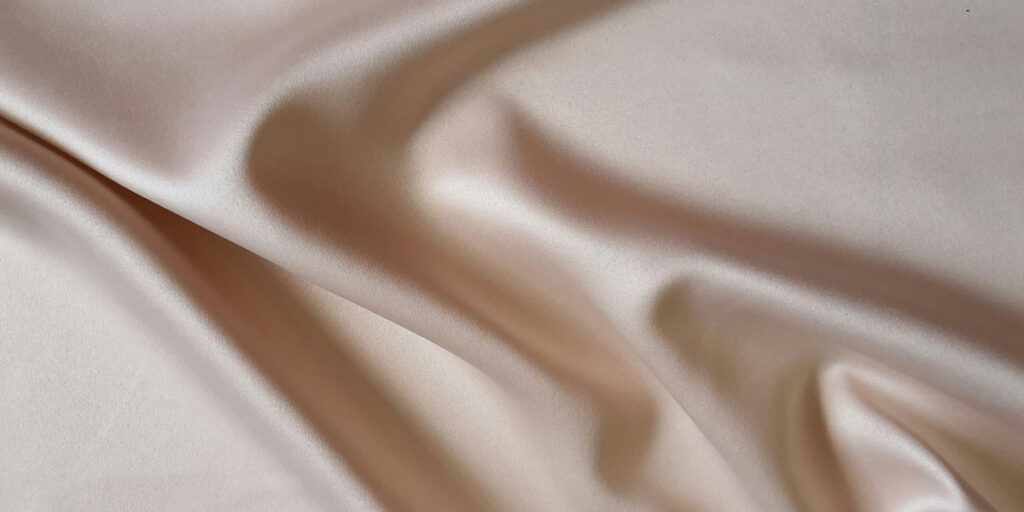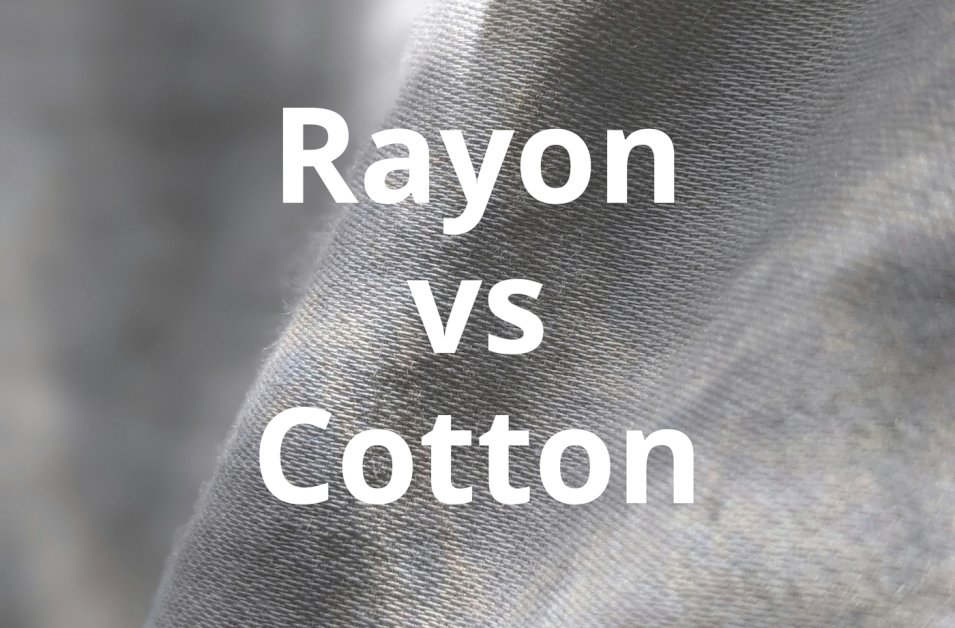This article takes an in-depth look at their definitions, production methods, pros and cons, and key differences to help you make an informed choice based on your needs. Whether you’re a fashion enthusiast, an eco-conscious shopper, or simply curious about fabrics, you’ll find valuable insights here.
What is rayon?
Rayon is a semi-synthetic fiber developed in the late 19th century, and it’s not considered a completely natural fabric. It’s made from regenerated cellulose, which comes from wood pulp—usually from bamboo, beech, or eucalyptus. While its source is natural, producing rayon requires extensive chemical processing that transforms the raw wood pulp into soft, smooth fibers, ultimately creating rayon fabric.

How is rayon made?
The production of rayon involves several chemical steps. First, cellulose is extracted from wood pulp or plants and dissolved in a chemical solvent such as sodium hydroxide, forming a substance called alkali cellulose. Next, this alkali cellulose is mixed with liquid carbon disulfide to create sodium cellulose xanthate, which is then extruded through spinnerets to form fine filaments. Finally, these filaments are washed, bleached, and dried to produce spinnable fibers.
Pros and cons of rayon
Pros
Drape: It has an elegant drape with a silky-smooth texture, flowing more naturally than stiff cotton fabrics.
Breathability: It absorbs moisture well, keeping the skin dry and comfortable even in hot weather.
Vivid colors: Rayon fibers have excellent dye absorption, resulting in bright and vibrant colors.
Lightweight and comfortable: This fabric is very light, offering comfort and ease of movement.
Wrinkle resistance: When stored properly, rayon does not wrinkle easily.
Cons
Durability: Rayon loses strength when wet, making it prone to tearing if handled roughly during washing.
Shrinkage: It can shrink significantly when washed, often requiring dry cleaning or gentle handwashing.
Environmental impact: Its production involves chemicals that are harmful to the environment.
What is cotton?
Cotton is a 100% natural, breathable fiber that comes from the fluffy cotton bolls surrounding cotton seeds. For thousands of years, people around the world have cultivated this plant for its soft, durable, and versatile fibers.

How is cotton made?
Cotton plants produce fluffy white bolls. When the bolls mature and burst open, the cotton is ready to be harvested, either by large machinery or by hand.
After harvesting, the raw cotton is filled with seeds and plant debris. It is then sent to a cotton gin, which efficiently separates the fibers from the seeds, leaving behind bundles of soft, fluffy raw cotton.
Next, the cotton fibers are cleaned, carded (brushed to align the fibers), and stretched, then spun into continuous threads or yarns. During this process, cotton gains strength and begins to take on the form we commonly recognize.
Pros and cons of cotton
Pros
Breathable and comfortable: Cotton is a natural cellulose fiber with a highly breathable structure. It allows air to circulate freely and absorbs moisture from the skin.
Hypoallergenic and gentle: Being natural and free from harsh chemicals (especially organic cotton), it’s safe even for sensitive skin.
Durable: Cotton fibers are strong, making fabrics resistant to frequent washing and high temperatures.
Versatile: From jeans and cozy sweatshirts to crisp sheets and plush towels, cotton has countless uses.
Cons
Wrinkles easily: Pure cotton fabrics tend to wrinkle and usually need ironing to look neat.
Slow to dry: While highly absorbent, cotton dries slowly. This can be inconvenient for sports or travel since it feels heavy when damp.
Prone to stretching: Although cotton knits are long-lasting, some fabrics may lose shape over time, becoming loose or stretched after repeated wear and washes.
Key differences between rayon and cotton
Although rayon and cotton sometimes feel similar to the touch, they have completely different characteristics. Let’s break down the key factors.
Origin
Rayon: Rayon is a semi-synthetic fiber made from natural cellulose derived from wood pulp—often from bamboo or beech trees. The cellulose is dissolved and chemically processed into smooth, extruded filaments that are spun into rayon yarn.
Cotton: Cotton is a 100% natural fiber that grows around cotton seeds in soft, fluffy bolls. It’s an agricultural product harvested directly from the fields.
Breathability
Rayon: Rayon is also highly breathable, often outperforming synthetic fibers like polyester, and it efficiently wicks away moisture.
Cotton: Its naturally hollow fibers allow excellent airflow, effectively carrying away body heat to keep you cool and comfortable.
Absorbency
Rayon: Rayon also absorbs moisture well but dries faster than cotton. This makes it feel cooler and less clammy during humid activities.
Cotton: Cotton has strong absorbent properties, making it excellent for towels. In clothing, cotton fabric effectively absorbs sweat and moisture, keeping you dry.
Durability
Rayon: Rayon is much more delicate. It loses a significant amount of strength when wet, so it should be hand-washed or dry-cleaned gently to avoid tearing.
Cotton: Cotton fibers are strong and become even stronger when wet, allowing them to withstand frequent washing.
Wrinkling
Rayon: Rayon doesn’t wrinkle as easily as pure cotton and typically maintains a smooth appearance when stored in a closet.
Cotton: Cotton is known for wrinkling easily. Pure cotton garments tend to crease throughout the day and often need ironing to look their best.
Cost
Rayon: Rayon is more affordable and serves as a great alternative to cotton.
Cotton: Because of its durability and comfort, cotton is generally more expensive than rayon.
Usage
Rayon: Rayon’s elegant drape, silky texture, and fluid movement make it perfect for more graceful, flowing garments such as blouses, dresses, skirts, and linings.
Cotton: Cotton is a staple fabric ideal for durable, breathable everyday essentials like T-shirts, jeans, sheets, towels, and underwear.
Sustainability
Rayon: Rayon’s sustainability depends entirely on production methods. If poorly managed, its chemical processing can cause pollution.
Cotton: Cotton’s environmental impact is mixed. Conventional cotton farming consumes a lot of water and may involve pesticide use, but organic and recycled cotton are more sustainable options.
Rayon vs. Cotton: Quick comparison table
| Feature | Rayon | Cotton |
| Origin | Semi-Synthetic (Wood Pulp) | Natural (Plant-based) |
| Breathability | Excellent | Very good |
| Absorbency | High | High |
| Durability | Strong | Weaker, especially when wet |
| Wrinkling | More wrinkle-resistant | Wrinkles easily |
| Cost | Generally low | From affordable to expensive |
| Usage | Dresses, blouses, linings, summer wear (imitates the drape of silk). | T-shirts, denim, bedsheets, towels, underwear, everyday apparel. |
| Sustainability | It depends on the processing method | It depends on the farming method |
Conclusion
Choosing between rayon and cotton can be quite tricky, as each fabric has its own unique advantages that cater to different needs. Rayon stands out for its silky comfort and beautiful drape, though its maintenance requirements and environmental impact should be considered.
On the other hand, cotton is trusted for its durability, breathability, and eco-friendly nature. As a consumer, your choice should depend on the purpose (such as sportswear, formal attire, or sustainable options) and your budget.However, for most people, cotton remains the top choice for everyday wear.
Related article: The Most Common Types of Fabrics




